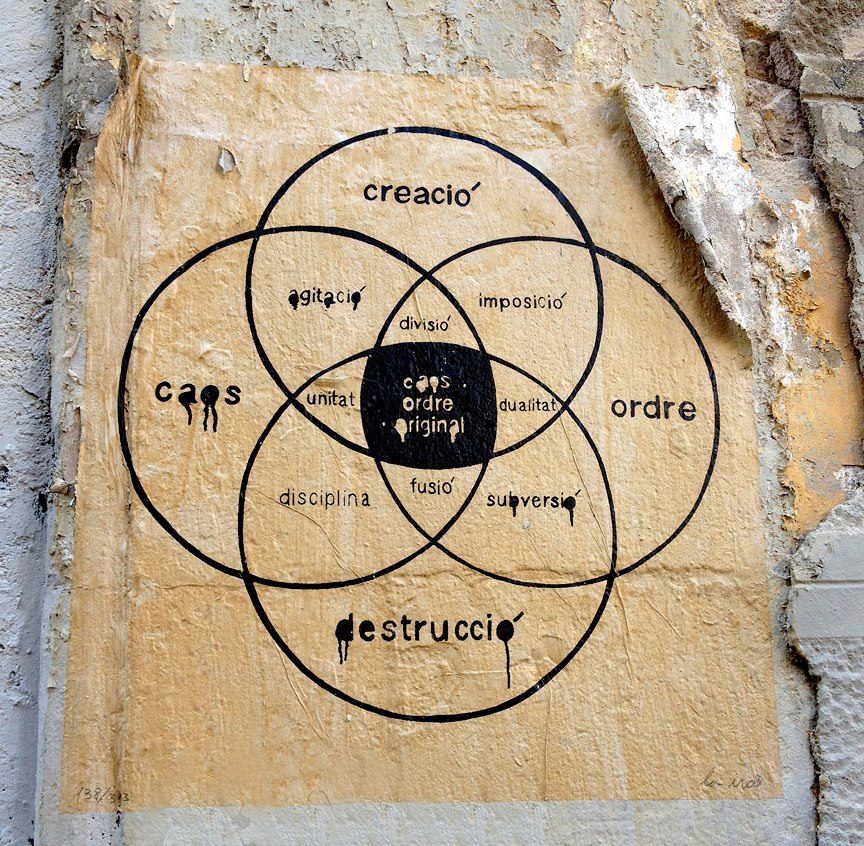
So, I finally had a chance to sit down with my stash of Friendly Plastic, courtesy of the good folks at Amaco. As I mentioned earlier, although Friendly Plastic has been around for years, I'd never used the product. Playing with all of those mouth-wateringly bold colors was really appealing to me. Amaco offers significant product support for Friendly Plastic on their website, including a number of sample projects (of which my favorite is this one).
One thing I will say, having spent several hours with the product - it did take me a little practice to use it, even to create the simple graphic pendants I made for this post. Friendly Plastic becomes moldable when heated, but the melt point is low enough that it's easy for a neophyte like me to shoot past the target range and end up with a too-gooey substance. I think this is where the choice of heat source becomes crucial. I used my craft toaster oven, and I found it a real handicap not to be able to see how pliable the material was becoming in the heat without taking my non-stick sheet out of the oven every five seconds. I think an electric griddle (the recommended method for heating up Friendly Plastic) or a heat gun would be definitely preferable.

However, Friendly Plastic takes cutters beautifully, and it's a much more forgiving method of using the product with the toaster oven. Even if the plastic is quite soft, it will still take a cutter well (as long as you are careful to wait until the plastic cools to lift the cut-out from the non-stick sheet to avoid distortion). Given this, and - well, frankly - because the bright colors of plastic reminded me of superhero costumes, I decided to focus on creating some bold, colorful pendants with the material.
Because Friendly Plastic will bond to itself when heated, it is relatively easy to create nice inlay designs with the material. I wanted as little distortion as possible in my designs, so I did not completely inlay each of the pieces in these pendants. The UV resin I used to seal them - Lisa Pavelka's Magic-Glos - domed over the designs (with one exception, above, and I liked the paper-mache effect it gave the piece, so I did not apply a second coat), so the raised surface of the pendant really didn't affect the finished product.

My product samples are all metallic sticks (the material is also available in pellet form), but they are metallic only on one side. When I wanted a more matte-looking surface, I simply flipped them over (the blue moon, above, is an example of using the reverse side of a stick). I also discovered that, when I use the sticks in this way, and use cut-out pieces as inlay, the edges curl up just enough as it softens to create an interesting metallic border around the cut-out piece.

To finish the two pendants, I used bails from my stash that were provided to me earlier, courtesy of Rings & Things. I simply attached plastic button shanks to the other two. (By the way, in case you're wondering - it was quite easy to punch stringing holes in the Friendly Plastic, but I discovered after several aborted attempts that I could not cleanly drill through the Magic-Glos the way I would with other types of resin.) I think the Friendly Plastic colors look good strung with brightly colored lucite and resin beads. I also think these simple designs would make excellent, funky rings - just attach to ring blanks, and they're good to go!
Thank you to Amaco for giving me the opportunity to play with this fascinating product!














14 comments:
Pretty cool! Your expmeriments came out really well!
Oh wow! I'm very impressed with your projects! I love how you paired all the colors and beads, makes me want to play with plastic!!! :)
Thanks, guys! These are pretty basic projects, but I think the bright colors of the Friendly Plastic really lend themselves to these types of designs.
pretty cool stuff!
It's neat to see more of an intriguing material like Friendly Plastic. You certainly must've had plenty of fun making these bright, bold pieces!
--Dave
at Rings & Things
I remember when FP came out, the recomended way to heat it up was in a few inches of water in an electric skillet. Is this not an option any more? Nice work on your pendants, too!
Hi Sandra,
It was pretty interesting to use and, of course, I love the colors. I will make my husband bring our heat gun back from his office next time I try it, though.
Thanks, Dave - I did! And thanks for the great bails!
Boot ~C, You are right - the electric griddle is still the recommended method to use to warm up the Friendly Plastic. I just don't happen to have one handy, and I wanted to use the tools I already own!
It's been so many years since I've used FP...thanks for the reminder!
Friendly Plastic is a fascinating medium. I don't work with it a lot, but when I do, I enjoy it. Looks you had yourself some fun. I love the bold beads you chose.
I still need to try my hand at it. I've got the samples sitting in a box waiting to be unpacked. I can't wait to play with it. I am encouraged by seeing what you've made. Nicely done as always!
Hi Cyndi - Sure!
Jeannie, I think it's astounding what you can do with Friendly Plastic. I have been enjoying reading the Friendly Plastic blog, since I tried out the material.
Hi Andrew,
I hope your unpacking and settling in is going well! I'll be curious to see what you make of the Friendly Plastic, when you try it - the applications for it are so broad.
Post a Comment